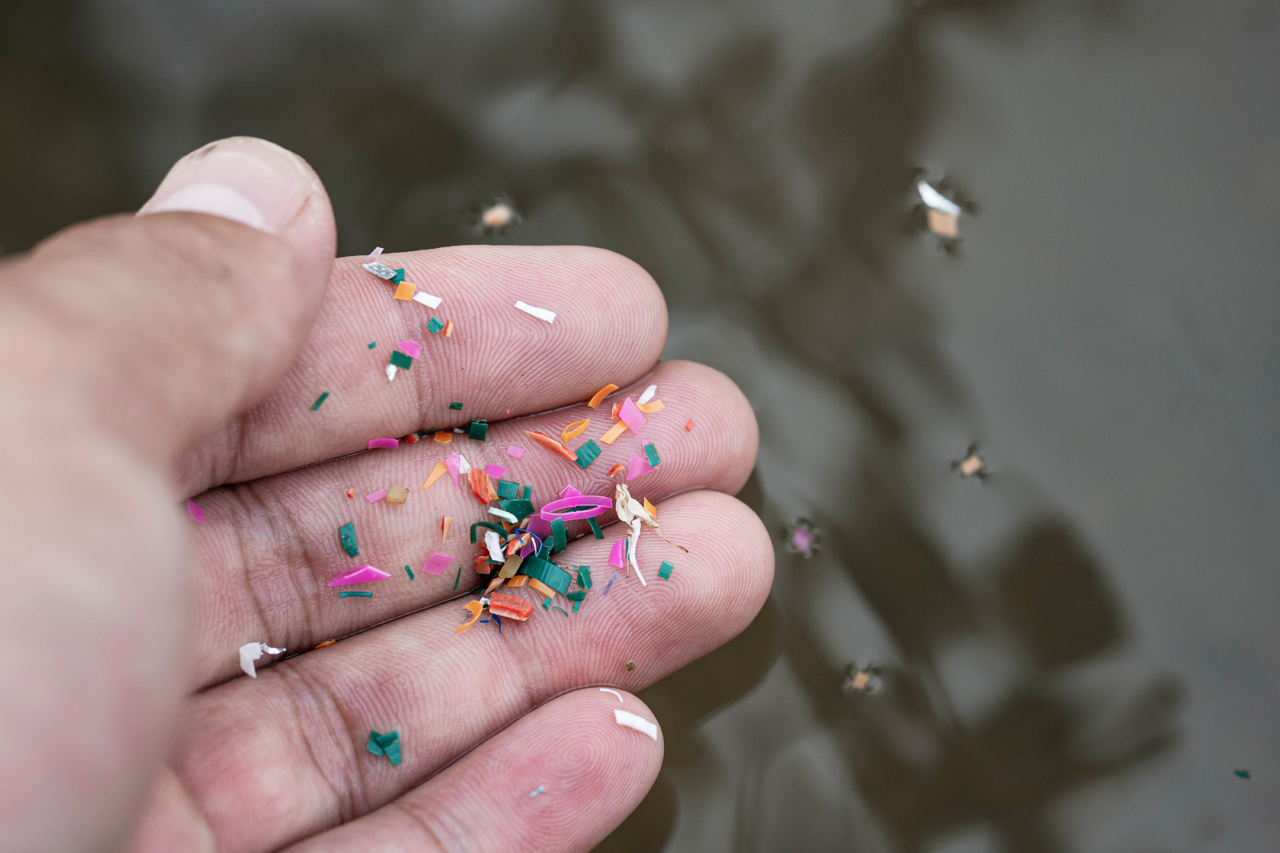 BY Samuel Mathis, MD, Assistant Professor, UTMB
BY Samuel Mathis, MD, Assistant Professor, UTMB
In December of last year, the Lancet published an article about the effect nano-plastics can have on our health and organs. The primary location that nanoplastics have been found is in the ocean, though now research indicates that micro(nano)plastics (MnP) are “found in every environmental compartment on earth, within tissues and gastrointestinal tracts of thousands of species, including humans” (1). As someone who lives near the ocean, I found the information fascinating and incredibly concerning for a patient population so closely linked to the water.
Micro(nano)plastics refers to microscopic and nanoscopic plastic particles that are created through the natural breakdown and shearing of plastics in the environment. These particles are then ingested or inhaled by humans. Many of these ingested particles are through foods (particularly seafood) drinking water, and plastic packaging. They are inhaled through exposure to plastic fumes or shearing of plastic products through winds or destruction of plastic products. The level of MNPs also depends on the geography of the food source (2).
Research is now looking at how these plastics affect our health. Once ingested, these MNPs are taken up on a cellular level where it becomes increasingly difficult to clear them. These particles cause cellular inflammation, damage, and can induce apoptosis (2). When ingested, MNPs cause inflammation of the gut mucosa, decreased response to harmful microbes, altered gut microbial diversity, disturbance in absorption, and death of GI epithelial cells. In the Cardiovascular system, microplastics have now been found in atherosclerotic plaques where they have affected plaque buildup and inhibited plaque breakdown. MNPs have also been linked to increased oxidative stress, increased platelet aggregation, and cellular inflammation (2). One study also found these particles affect atrioventricular heart valve development in embryos.
These plastics affect most of the internal organs, including brain, liver, kidneys, and reproductive organs. We also have seen that MNPs affect our immune system through oxidative stress, change in cytokine levels, and suppressing the histamine release response (2). These are only a few examples of the effect MNPs have on the human body. I encourage readers to check out the Lancet article and subsequent review articles that focus on the various organ systems in more depth.
The natural “next question” after learning of this is “What can we do about it?” The best way to get rid of MNPs from the body is primarily prevention. Removing exposures of MNPs allows the body to naturally detoxify and prevents further buildup and complications. There are a few recommendations I have for patients when talking through microplastics and how to avoid them. Many of them are in line with standard integrative medicine practices. The easiest way to limit exposure to microplastics is to limit exposure to plastics in general. Try to buy products that use glass or paper. Don’t heat up food in plastic containers, limit foods stored in cans, bottles, or single use containers. I regularly recommend people limit use of plastic water bottles and encourage use of filtered water in glass or reusable safe plastic containers. Certain coffee shops now allow customers to bring their own cups to limit their exposure to the plastics in cups and straws. We should also recommend limitation on animals and seafood known to be high in MNPs. That statement alone amounts to treason for someone who lives on Galveston Island like me, but the fact remains that bivalves are one of the highest sources of MNPs in seafood (1).
I am unsure how much effect MNPs have on our day-to-day life, but the research indicates that the long-lasting effects of these plastics will be with us for generations to come. The harmful effects these plastics are having on our vegetation, marine life, and personal health indicate a continued need to advocate for better, safer, and healthier alternatives. Plastic products are in high demand today because of their cost saving metrics. However, the long-term costs of these products may far supersede the cost-saving effects found today. This is why it is vital that we educate our patients and communities about these risks and encourage healthier and safer alternatives.
Citations:
- Allen, S. et al. 2022. Micro(nano)plastics sources, fate, and effects: What we know after ten years of research. Journal of Hazardous Materials Advances. Vol 6.
- Ali, N. et al. 2023. The Potential Impacts of Micro-and-nano plastics on various organ systems in humans. The Lancet. 99. Jan.


